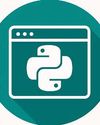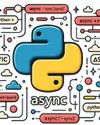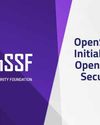15 Things to Remember While Selecting an IoT Platform

Around 2015, there were 260 IoT platforms in the market. In just one year, the number rose to 360! By 2017, there were 450 IoT platforms and today, there are over 600. This exponential growth in the number of IoT platforms proves that IoT has already become mainstream.
But this large number can lead to a lot of confusion when it comes to selecting the right platform for a particular business. There are so many factors that need to be considered and assessed. One needs to keep in mind at least the following 15 things while selecting an IoT platform.
1. Vendor/parent company
You need to ensure that the platform you are choosing comes from a reliable and credible vendor—one that has been in the market for a considerable amount of time. You can try checking out other products from the same vendor and see if they have a good life expectancy in the market. You can consider looking at clients and customers of the vendor as well, especially those who have invested in the same platform as you are planning to. Trust is a key factor in the IoT platform market—you are trusting a platform with your data after all.
2. Scalability
A scalable system is a stable system. Over time, businesses grow, expand and sometimes even pivot. Your IoT platform must be scalable enough and should accommodate all these changes— especially the large influx of data as a company matures in the market. To make your selection process easier, check how the IoT platform has grown from the time it was launched. Did it compete with the changing technologies? Has it adopted newer protocols?
Diese Geschichte stammt aus der October 2022-Ausgabe von Open Source For You.
Starten Sie Ihre 7-tägige kostenlose Testversion von Magzter GOLD, um auf Tausende kuratierte Premium-Storys sowie über 9.500 Zeitschriften und Zeitungen zuzugreifen.
Bereits Abonnent ? Anmelden
Diese Geschichte stammt aus der October 2022-Ausgabe von Open Source For You.
Starten Sie Ihre 7-tägige kostenlose Testversion von Magzter GOLD, um auf Tausende kuratierte Premium-Storys sowie über 9.500 Zeitschriften und Zeitungen zuzugreifen.
Bereits Abonnent? Anmelden

The Importance of Explainable AI in the Era of Agentic Systems
Explainable AI (XAI) makes AI systems transparent, explainable, and credible. It ensures users understand why a given model arrived at a specific decision so that it is easier to verify, debug, and trust the system. Let's look at all that XAI entails followed by a real-world example of how it works.

Python 3: Features Every Developer Should Know Of
Here's a review of some of the most significant features and enhancements introduced in Python 3, responsible for making it the programming language that developers love to work with.

Monitor the Health of Your System with New Relic
Learn how New Relic can be effectively used to monitor Dockerized applications in a production environment. Walk through a step-bystep integration, which explains key monitoring metrics and demonstrates how organisations can leverage New Relic's alerting, logging, and visualisation capabilities to maintain optimal system performance.

Optimising IT with Open Source: A Guide to Asset Management Solutions
A Guide to Asset Management Solutions
Understanding Bag-of-Words and corpora. Dictionary in Python
Discover how the Bag-of-Words model can be applied and visualised in a Python project.

The Best Open Source AI Projects for Beginners
Here's a list of the top open source AI projects for beginners, along with practical hands-on implementations and real-life applications that can be built using these tools.

The Right Ways to Address Cross-Site Request Forgery
Here’s an overview of the key concepts, impact and effective mitigation strategies of cross-site request forgery, also known as CSRF.

Al-Powered API Testing: Revolutionising Software Quality Assurance
Al-powered API testing is reshaping the landscape of software quality assurance. By automating and optimising testing processes, organisations can enhance the reliability and performance of their APIs, ultimately leading to better user experiences.

Why Python Developers Should Care About Asynchronous Programming
Explore what asynchronous programming is, when it should be used, how Python supports it, and measure its performance as compared to synchronous programming.

Linux Foundation and OpenSSF unveil Cybersecurity Skills Framework
The Linux Foundation, in collaboration with the Open Source Security Foundation (OpenSSF) and Linux Foundation Education, has released the Cybersecurity Skills Framework—a global reference designed to help organisations identify and strengthen key cybersecurity competencies across a broad range of IT roles, not just among cybersecurity specialists.
